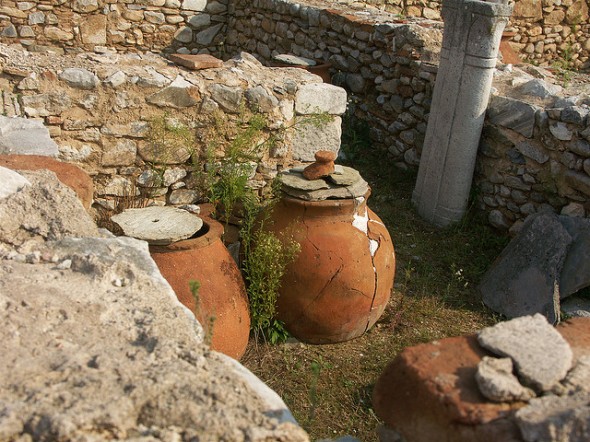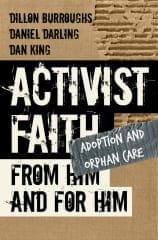UPDATE: You can now get the Philippians Community Commentary, enhanced with additional Bible study tools, on Kindle!
[serialposts]The letter to the Philippians is a well known text in the Bible and the apostle Paul is the undisputed author.
May the following serve as an introductory background concerning this great New Testament letter.
The city of Philippi.
The city of Philippi is located in Macedonia. It was named after Philip of Macedon who was the father of Alexander the Great (356 B.C.). The Roman Empire sacked the city in 168 B.C. and later (42 B.C.) refound the city with retired Romand soldiers and Roman citizens. This made the city heavily populated by Romans as it was made a Roman colony.
James Jeffers notes that “Philippi was in many respects a miniature Rome.” Archeology proves the point as “86 percent of the inscriptions found here dating to this era are in Latin” (The Greco-Roman World of the New Testament, 202).This suggests that the local population’s official language was Latin, although Greek was the main language for commerce.
Also, it is believed that there was not a significant Jewish population in the city because there was not a synagogue, which would make Philippi unique when compared with most of the cities that Paul travelled to and wrote to.
Paul first visited the city around 49 A.D. (Acts 16:11-15). In Acts 16 we are introduced to people of Philippi from all walks of life: a weathly merchant name Lydia, a young slave girl, and a jailer.
Gordon Fee notes that “…this suggests that the socioeconomic range was somewhat similar to what one finds in churches in urban centers today” (Philippians, 26).
The city also included a “forum the size of a football field, an open-air theater, two large temples, public buildings, a library, and Roman baths” (Nelson’s New Illustrated Bible Dictionary, 984).
The city was located on a major trade route between Asia and Rome, which brought the city prominence and wealth. Because of the military background of the city’s population, the location of the city, and the mark of a Roman colony, Philippi was a city of status in the ancient world.
The church in Philippi.
The founding of the church in Philippi may be read in Acts 16. Gordon Fee notes:
According to Luke’s report, its nucleus was formed by a group of God-fearing women, who, because of the lack of a Jewish synagogue in the city, had been meeting by the river on the sabbath for prayer. Given the well-known prominent place of women in Macedonian life in general, it is not surprising that the core group of first converts consisted of women, nor that the location of Macedonia’s first house church was the home of a woman merchant (Philippians, 26).
The woman merchant is Lydia, who plays a prominent role in Acts 16, but is not mentioned in the letter to the Philippians.
The date of the letter.
The letter was probably written around 60 to 62 A.D., which would place it later in the life of Paul. Paul was most likely martyred in the mid to late 60s under the emperorship of Nero.
It is largely believed that Paul wrote the letter from Rome because of his reference to the “whole palace guard” (1:13) and his greetings from “Caesar’s household” (4:22).
However, some suggest it may have been written from Caesarea or Ephesus. Nevertheless, Paul did write the letter from prison (1:7) and the letter is included in the group known as the “Prison Epistles” (with Ephesians, Colossians, and Philemon).
Why Paul wrote the letter.
There seems to be three main reasons why Paul wrote the letter.
First, Paul was writing to friends. He had a very good relationship with the Philippians. This may be seen when one compares the overall tone of the letter with other letters by Paul (i.e. Galatians or 1 Corinthians). One may also note the kind words in 1:3-11, 2:19-29, 4:1, and 4:10-23. It seems that Paul had a very close and dear relationship with the Philippians.
Second, Paul writes to warn the Philippians about “opponents” (1:28, 3:2-3, 3:18-19). These were people that were trying to corrupt the Philippians or people that will probably be coming to corrupt the Philippian church. We do not know much about these “opponents” except what Paul writes to discount their teachings. Nevertheless, these “opponents” were strong enough to have Paul warn the Philippians about them.
Third, Gordon Fee writes, “Paul’s overarching concern is with the gospel, a word that occurs more often in this letter than in any of his others” (Philippians, 22). It is clear that Paul is writing to encourage the Philippians to walk in the truth of the gospel and to exemplify Christ’s humility. This is to be done even in the difficulties that are brought by the opponents and the suffering that living a Christ-like life in a Roman city may bring.
I hope you enjoy studying Philippians as much as I do.
Here are some recommended commentaries with notes to help you decide which one(s) might be right for you.
Markus Bockmuehl, The Epistle to the Philippians (Hendrickson, 1998)
- This commentary leans toward a more technical commentary and is recommended for the seasoned student of the New Testament
Gordon D. Fee, Philippians (Inter-Varsity Press, 1999)
- This commentary has a good balance of application and technical information and is recommended for all students of the Bible
Gordon D. Fee, Paul’s Letter to the Philippians (Eerdmans, 1995)
- This commentary is a step-up on the technical information from Gordon Fee’s commentary above. It is very readable and recommended for the seasoned student of the New Testament.
Ralph P. Martin, Philippians (Eerdmans, 1987)
- This financially reasonable commentary is very practical and is suitable for all students of the Bible
Peter T. O’Brien, The Epistle to the Philippians (Eerdmans 1991)
- This is a highly technical commentary and is only recommended for those that are familiar with the Greek New Testament






Interesting and informative introduction. It has previously escaped me that the nucleus of the early church at Philippi was a group of women. If I knew it, it’s a fact I’d forgotten. The book of Philippians has always been one of my favorites, and I suspect that the friendly tone of Pauls that you mentioned is probably one of the reasons why. It’s good to read a letter from a friend – who encourages and inspires us. I look forward to the ongoing discussions in this study. Thank you.
Thanks for the comments – I look forward to the ongoing study as well.
What a great start to this bible study. Very well written introduction and very informative as Patricia Hunter has already stated. I have always enjoyed reading Philippians. Looking forward to read more on this study.
Thank you for sharing and glad that you found the intro helpful.
It’s hard not to enjoy Philippians. The tone of the epistle is uplifting, as is the attitude of the imprisoned Paul. Great intro! If I ever knew the city was named for the father of Alexander the Great, I had forgotten it. Looking forward to the rest of the study!
It truly is an encouraging and uplifting letter. Thanks for the comments!
When I have the opportunity to see scripture through the thoughts and intellect of another….it provides new color to the painted pictures of others…and to my own self portrait of personal “knowledge, understanding or biases – or just plane ignorance”. I too echo Patricia Hunter. Thanks Mark…
Oh! the joy of studying the Bible in community!
Thanks Andy!
this is a great way to kick off a #biblestudy! the three reasons for the letter covered here are a great lens to filter each passage through. i pray that as we go through each passage, that these things stay at the forefront of all of our minds and provide the appropriate context we need to interpret correctly.
Thanks for the comments BibleDude Man!
Mark, this introduction is really helpful. Thank you. And please forgive my Facebook post this morning in which I commented that the study begins “today.” I’m embarrassed for my oversight and meant no offense.
No problem and no offense taken at all!
I am glad you found the introduction helpful.